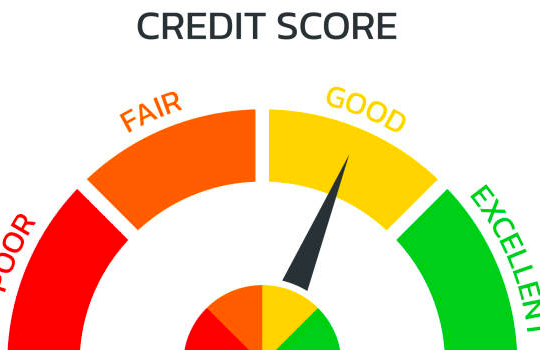Consumer loans are an all-purpose type of financing used to cover various expenses. Some examples include credit cards, auto loans, mortgages and personal loans while more specialized types such as student loans or debt consolidation may be available as well.
Consumer loans, used responsibly, can help strengthen financial security, optimize cash flow and use debt as a tool to increase net worth over time.
Getting the best rates
Consumers turn to personal loans when unexpected expenses or debt consolidation arise, yet not all lenders provide equal rates. To find the lowest possible interest rates, it is wise to shop around online between lenders such as local banks, credit unions and marketplace lenders to compare personal loan offers at once and see the full costs before signing for one.
Loan rates are determined based on a borrower’s creditworthiness and ability to repay the loan; this process is known as risk-based pricing. Lenders charge higher rates to those they perceive are more likely to default on payments than others.
Lenders consider various factors when assessing potential borrowers such as income, employment status and debt-to-income ratio when making this determination.
Borrowers with excellent or very good credit tend to be considered low-risk borrowers and typically receive the best loan rates. Borrowers with poor or no credit may incur higher loan rates as they pose greater risk to lenders; having steady, verifiable income can also help borrowers avoid paying high loan rates.
Using a house for collateral
Collateral loans are secured loans backed by assets like your home or car that reduce a lender’s risk and enable more favorable loan terms such as lower interest rates.
Most collateral loans are closed-end, meaning monthly payments over their term; however, some lenders offer revolving credit which lets you spend up to an established limit as needed.
Consumer loans come from various sources, from traditional banks and credit unions to online marketplace lenders and peer-to-peer lenders. Consumer loans can be used to fund expenses ranging from debt consolidation to home improvement projects; but before taking out one it’s essential that a plan be created for how you intend on repaying any outstanding debts.
Assuming your home as collateral can be an excellent way to secure consumer loans, but it could prove dangerous if you cannot repay your debts on time. Should this happen, lenders could repossess it and possibly force foreclosure proceedings against a borrower who cannot make their payments.
Secured personal loans are a form of consumer credit that are secured against an asset, such as your house, car or bank account balance. They’re typically offered to borrowers with lower credit scores because this form of loan poses less risk to lenders; additionally they typically feature lower interest rates and larger loan amounts than unprotected consumer loans.
Common forms of collateral include real estate, vehicles and cash in savings accounts; alternative sources could include stock or bond portfolios, future paychecks, fine art jewelry or even life insurance policies. Collateral can be pledged against almost all consumer lending products such as personal loans, credit cards, lines of credit and mortgages.
Consumer loans secured by an asset, like a car or home, are the most sought after consumer loans available from credit unions or banks.
Some are even available to people with poor or no credit histories as an excellent way of building up positive credit histories and using these types of loans for various purposes. Using bolig as collateral can help you decrease your monthly payments. This can be helpful, as long as you’re aware of the risks involved.
Getting a loan in Norway
If you need a consumer loan in Norway, it is essential that you understand that the process may differ depending on your personal situation and creditworthiness. Typically, this involves providing proof of income, identity verification and consenting to a credit check; some lenders may require a guarantor as well.
Furthermore, you may incur fees such as origination charges or late payment penalties; however there may be ways around this by shopping around for the most favorable loan terms.
Consumer loans in Norway provide you with access to emergency funds or short-term expenses that exceed what your credit card can handle, home furnishings and upgrades for interior design as well as upgrading vehicles.
Payment can be spread out over up to five years with interest rates typically between seven and twenty-two percent; before making your decision it is important to compare rates from various institutions as well as understand all terms involved before taking action.
Foreigners living in Norway may find it challenging to obtain loans. You will typically need to meet stringent eligibility criteria in order to be approved, such as having a stable income and high credit score.
A low score could severely limit your options; as such it’s wiser to take steps toward increasing it beforehand by paying bills on time, not maxing out credit cards, and maintaining a healthy mix of debt. You can click the link: https://www.thelocal.no/ to learn more about building a good credit score.
Consumer loans in Norway aren’t the only form of money borrowing available – you can also borrow through mortgages in Norway. A mortgage is secured against property, with its amount depending on your creditworthiness. Repayable over three or four decades, there are two different kinds of mortgage loans: annuitetslan and serielan.
Mortgages in Norway can be an excellent way to secure your future, but it should be used responsibly. Before applying, carefully consider the long-term impact of any financial decisions and seek guidance from a trustworthy advisor.
Also keep in mind that any mortgage should only be used for homes you can afford – purchasing houses beyond your means will only lead to future debt issues, so before committing yourself further it’s wiser to carefully examine your budget and consider all available loans before deciding. For advice or help contact one of Norway’s many professionals.
How to Get the Lowest Loan Rates?
When it comes to borrowing money, many factors impacting its cost are beyond your control – this includes loan type, credit requirements and fees among others. Although much of this remains out of your hands, there are ways that can help ensure that you find the lowest loan rates possible.
Loan rates with the lowest loan rates tend to go to those with excellent credit scores, high incomes and a favorable debt-to-income ratio (DTI ratio), which measures your monthly debt payments such as mortgage, auto loans and credit card balances divided by pre-tax income. You can click here to learn more about debt-to-income ratio.
Lenders use this number to assess borrowers’ ability to repay loans quickly before assigning an appropriate interest rate accordingly.
As one of the best ways to secure low loan rates is improving your credit score before applying for a personal loan, this includes lowering credit utilization and checking for errors on your report. Furthermore, finding a co-signer with better credit and higher income could also help secure loans with reduced rates of interest.
Length of repayment term can have a dramatic impact on the rate you pay for a personal loan. Shorter loan repayment terms often attract lower loan rates as lenders view those who make timely payments as being less of a risk than those who miss payments.
When comparing personal loan rates, be sure to consider all fees when calculating total loan costs. Some lenders charge application, origination and late fees while others have various other charges which could add up over the life of your loan.
Be sure to also take into account how long a lender has been operating as well as their reputation for customer service as these factors could all impact your overall experience with them.
Prequalifying with lenders is the best way to compare them, since it won’t affect your credit score and gives an overview of what each provider offers without needing to submit an application. Doing this will allow you to narrow down your options and select one that best meets your needs]’/Once you’ve narrowed down your choices, be sure to compare interest rates, loan amounts and repayment terms offered by each lender. Also take into consideration any unique features they might offer such as saving on interest through automatic payments or an online account. These can help you to determine the best loan product for you and your situation.

Krishna Murthy is the senior publisher at Trickyfinance. Krishna Murthy was one of the brilliant students during his college days. He completed his education in MBA (Master of Business Administration), and he is currently managing the all workload for sharing the best banking information over the internet. The main purpose of starting Tricky Finance is to provide all the precious information related to businesses and the banks to his readers.






